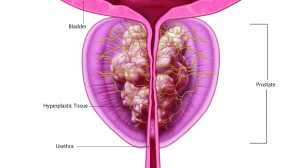10 Essential Health Tips You Should Know for a Happier, Healthier Life
Get Regular Screenings
Regular health screenings are crucial for early detection of illnesses. It's important to stay ahead of potential issues, from routine blood tests to more specific exams like cholesterol checks or a simple strep test. A strep throat infection, for example, is highly contagious and can escalate if not treated quickly. Fortunately, Googling strep tests near me is now easier than ever, with most urgent care centers and clinics offering fast and accurate testing. Don’t wait for symptoms to worsen—early detection can save you from a lot of discomfort. (more…)Kickstart Your Health And Wellness Journey: Top Trends To Look Out For
How to Get a Flatter Stomach
Have you ever wondered why achieving a flat stomach seems so elusive? Many people struggle with this goal, often feeling frustrated by the lack of results despite their best efforts. Understanding that a flat stomach is not just about aesthetics but also about health can make the journey more meaningful. In this guide, we'll walk you through practical, achievable steps to help you get a flatter stomach.
Understanding the Anatomy and FactorsThe Anatomy of the Stomach
To work towards a flat stomach, it's important to understand the muscles involved. The main muscles to focus on are:
• Rectus Abdominis: Often referred to as the "six-pack" muscles, these run vertically along the front of the abdomen.
• Transverse Abdominis: Located underneath the rectus abdominis, these muscles help stabilize the core.
• Obliques: Located on the sides of the abdomen, these muscles are crucial for twisting and side- bending movements.
(more…) Being fit is very important. It's not just about how we look but also about how we feel. When we are fit, we have lots of energy and can do lots of things. We can run, jump, and play without getting tired easily. Being fit also helps us stay healthy and strong. When we care for our bodies, we can do our best and feel happy daily!
This guide will help you understand fitness in a simple and fun way. We’ll talk about why fitness is important, how to get started, and some cool tips to keep you motivated. Let’s jump in!
Being fit is very important. It's not just about how we look but also about how we feel. When we are fit, we have lots of energy and can do lots of things. We can run, jump, and play without getting tired easily. Being fit also helps us stay healthy and strong. When we care for our bodies, we can do our best and feel happy daily!
This guide will help you understand fitness in a simple and fun way. We’ll talk about why fitness is important, how to get started, and some cool tips to keep you motivated. Let’s jump in!
Why Fitness is Important
Fitness is like a superpower that makes your body and mind stronger. Here are some reasons why it’s so important:- Boosts Energy: Exercise gives you more energy to do the things you love.
- Improves Mood: Physical activity releases happy chemicals in your brain, making you feel happier.
- Strengthens Muscles and Bones: Regular exercise helps build strong muscles and bones.
- Helps You Sleep Better: Being active can help you sleep like a baby at night.
- Reduces Stress: Exercise is a great way to blow off steam and feel calm.
Health and Wellness – 6 New Trends Offering Benefits for the Masses
1. Digital Fitness Apps
Digital fitness apps have redefined the way people engage with personal fitness, providing tools that help users manage their health and wellness directly from their smartphones. These apps offer a range of functionalities, including personalized workout plans, step tracking, calorie counting, and even virtual coaching sessions. The integration of these features makes it easier for users to stay committed to their fitness goals, providing a convenient and adaptable approach to exercise that fits into the user's lifestyle. The benefits of digital fitness apps extend beyond simple workout assistance; they also play a crucial role in motivating users to stay active and healthy. By setting personalized goals and receiving instant feedback on progress, users can see tangible results that encourage continued effort. Additionally, many apps now offer social connectivity features, allowing users to join communities of like-minded individuals who support and inspire each other. This sense of community can be particularly motivating, making it easier for individuals to maintain a consistent fitness routine. (more…)USPSTF: Not Enough Evidence To Recommend For or Against Vitamin D Screening in Asymptomatic Adults
Obesity Epidemic Linked to Ultra-Processed Foods
Vitamin D, With and Without Calcium, for the Prevention of Fracture
- (i) observational studies of risks of fracture associated with prolonged differences in blood concentrations of 25(OH)D;
- (ii) randomised trials of vitamin D alone versus placebo or no treatment for prevention of fracture; and
- (iii) randomised trials of calcium and vitamin D versus placebo or no treatment for prevention of fracture.In addition, we reviewed the design of the ongoing randomised trials assessing the effects of higher doses of vitamin D alone or in combination with calcium for prevention of fracture.
Ultraprocessed Food Linked to Increased Risk of Type 2 Diabetes
Health Care Spending Increasing But Not On Primary Care
Home Urine Test May Predict Aggressive Prostate Cancer Prior to Biopsy
Americans Still Exercising Too Little, Sitting Too Much
Doctor, My Close Friend Died and I am Still Grieving
 Prof. Wai-Man (Raymond) Liu, PhD
Associate Professor
Research School of Finance, Actuarial Studies & Statistics
College of Business & Economics Building
The Australian National University
MedicalResearch.com: What is the background for this study?
Response: In our study, we studied survey responses of over 26,000 people from the largest Australian household survey over a period of 14 years. The survey was funded by the government called “The Household, Income and Labour Dynamics in Australia (HILDA) Survey”. The survey was conducted by the Melbourne Institute.
In the survey more than 9,500 of these respondents had experienced the death of a close friend.
(more…)
Prof. Wai-Man (Raymond) Liu, PhD
Associate Professor
Research School of Finance, Actuarial Studies & Statistics
College of Business & Economics Building
The Australian National University
MedicalResearch.com: What is the background for this study?
Response: In our study, we studied survey responses of over 26,000 people from the largest Australian household survey over a period of 14 years. The survey was funded by the government called “The Household, Income and Labour Dynamics in Australia (HILDA) Survey”. The survey was conducted by the Melbourne Institute.
In the survey more than 9,500 of these respondents had experienced the death of a close friend.
(more…)Algorithm Allows Patients To Calculate Their Risk of Stroke and Heart Disease
Simple Interventional Program Can Reduce Sunburns in Outdoor Workers
 Sonia Duffy, PhD, RN, FAAN
Professor, College of Nursing
The Ohio State University
MedicalResearch.com: What is the background for this study?
Response: Prior to conducting a tobacco cessation study with Operating Engineers, I conducted a survey of 498 Operating engineer and found that many of them were at risk for sun burning, which can lead to skin cancer. So as a follow up study, I conducted a study to prevent sun burning, which randomized 357 Operating Engineers to were randomized to four interventions: education only; education and text message reminders; education and mailed sunscreen; and education, text message reminders, and mailed sunscreen.
(more…)
Sonia Duffy, PhD, RN, FAAN
Professor, College of Nursing
The Ohio State University
MedicalResearch.com: What is the background for this study?
Response: Prior to conducting a tobacco cessation study with Operating Engineers, I conducted a survey of 498 Operating engineer and found that many of them were at risk for sun burning, which can lead to skin cancer. So as a follow up study, I conducted a study to prevent sun burning, which randomized 357 Operating Engineers to were randomized to four interventions: education only; education and text message reminders; education and mailed sunscreen; and education, text message reminders, and mailed sunscreen.
(more…)Parents and Siblings of Supercentenarians Also Live Extended Lives
 Stacy L. Andersen, PhD
Assistant Professor of Medicine
Project Manager
New England Centenarian Study
Long Life Family Study
Boston University School of Medicine
Boston Medical Center
Boston, MA 02118
MedicalResearch.com: What is the background for this study?
Response: Exceptional longevity appears to run in families. Previous studies have found that people who have siblings who live into their 90s or who reach 100 years of age have a greater chance themselves of living longer than the general population. Yet it is supercentenarians, those who reach the age of 110 years, who represent the true extreme of the human lifespan. We wanted to determine whether the parents and siblings of supercentenarians were more likely to reach very old ages than family members of younger centenarians.
We collected family tree information for 29 participants of the New England Centenarian Study aged 110-119 years. Proof of age documents and familial reconstruction methods were used to validate ages and dates of birth and death of the supercentenarian as well as his or her parents and siblings. Mean age at death was compared to birth year and sex-specific US and Swedish cohort life table estimates conditional on survival to age 20 for siblings to omit deaths due to nonheritable factors such as infectious disease or accidents and survival to age 50 (the approximate age at which women are no longer able to reproduce) for parents. (more…)
Stacy L. Andersen, PhD
Assistant Professor of Medicine
Project Manager
New England Centenarian Study
Long Life Family Study
Boston University School of Medicine
Boston Medical Center
Boston, MA 02118
MedicalResearch.com: What is the background for this study?
Response: Exceptional longevity appears to run in families. Previous studies have found that people who have siblings who live into their 90s or who reach 100 years of age have a greater chance themselves of living longer than the general population. Yet it is supercentenarians, those who reach the age of 110 years, who represent the true extreme of the human lifespan. We wanted to determine whether the parents and siblings of supercentenarians were more likely to reach very old ages than family members of younger centenarians.
We collected family tree information for 29 participants of the New England Centenarian Study aged 110-119 years. Proof of age documents and familial reconstruction methods were used to validate ages and dates of birth and death of the supercentenarian as well as his or her parents and siblings. Mean age at death was compared to birth year and sex-specific US and Swedish cohort life table estimates conditional on survival to age 20 for siblings to omit deaths due to nonheritable factors such as infectious disease or accidents and survival to age 50 (the approximate age at which women are no longer able to reproduce) for parents. (more…)Structural Brain Changes in Sleep Apnea Linked to Cognitive Decline
 Nathan E. Cross PhD, first author
School of Psychology.
Sharon L. Naismith, PhD, senior author
Leonard P Ullman Chair in Psychology
Brain and Mind Centre
Neurosleep, NHMRC Centre of Research Excellence
The University of Sydney, Australia
MedicalResearch.com: What is the background for this study? What are the main findings?
Response: Between 30 to 50% of the risk for dementia is due to modifiable risk factors such depression, hypertension, physical inactivity, obesity, diabetes and smoking.
In recent years, multiple longitudinal cohort studies have observed a link between sleep apnoea and a greater risk (1.85 to 2.6 times more likely) of developing cognitive decline and dementia. Furthermore, one study in over 8000 people also indicated that the presence of obstructive sleep apnoea (OSA) in older adults was associated with an earlier age of cognitive decline, and that treatment of OSA may delay the onset of cognitive impairment.
This study reveals important insights into how sleep disorders such as OSA may impact the brain in older adults, as it is associated with widespread structural alterations in diverse brain regions. We found that reduced blood oxygen levels during sleep are related to reduced thickness of the brain's cortex in both the left and right temporal areas - regions that are important in memory and are early sites of injury in Alzheimer's disease. Indeed, reduced thickness in these regions was associated with poorer ability to learn new information, thereby being the first to link this structural change to memory decline. (more…)
Nathan E. Cross PhD, first author
School of Psychology.
Sharon L. Naismith, PhD, senior author
Leonard P Ullman Chair in Psychology
Brain and Mind Centre
Neurosleep, NHMRC Centre of Research Excellence
The University of Sydney, Australia
MedicalResearch.com: What is the background for this study? What are the main findings?
Response: Between 30 to 50% of the risk for dementia is due to modifiable risk factors such depression, hypertension, physical inactivity, obesity, diabetes and smoking.
In recent years, multiple longitudinal cohort studies have observed a link between sleep apnoea and a greater risk (1.85 to 2.6 times more likely) of developing cognitive decline and dementia. Furthermore, one study in over 8000 people also indicated that the presence of obstructive sleep apnoea (OSA) in older adults was associated with an earlier age of cognitive decline, and that treatment of OSA may delay the onset of cognitive impairment.
This study reveals important insights into how sleep disorders such as OSA may impact the brain in older adults, as it is associated with widespread structural alterations in diverse brain regions. We found that reduced blood oxygen levels during sleep are related to reduced thickness of the brain's cortex in both the left and right temporal areas - regions that are important in memory and are early sites of injury in Alzheimer's disease. Indeed, reduced thickness in these regions was associated with poorer ability to learn new information, thereby being the first to link this structural change to memory decline. (more…)Perinatal Folic Acid May Protect Against Serious Mental Illness in Young People
Why Do People Choose Monogamy vs Consensually Non-Monogamous Relationships?
TPOXXÒ (tecovirimat): Novel Antiviral Agent in the Event of a Smallpox Epidemic
Surgery For Spondylolisthesis (Spinal Stress Fractures) Reduced Chances of Opioid Dependence
MedicalResearch.com Interview with: [caption id="attachment_42890" align="alignleft" width="199"] Dr. Ugiliweneza[/caption] Beatrice Ugiliweneza, PhD, MSPH Assistant Professor Kentucky Spinal Cord Injury Research Center Department of Neurosurgery, School...
Enzalutamide (Xtandi) Provides Men with NonMetastatic Castration Resistant Prostate Cancer an Effective Treatment Option
Enzalutamide significantly delayed the time to metastases development by almost 2 years compared to placebo with a 71% reduction in...
Two Studies Evaluate Monoclonal Antibody Tralokinumab For Asthma
Song Contests Linked To Life Satisfaction and Health
 Filippos Filippidis MD, MSc, MPH, PhD
Lecturer in Public Health
School of Public Health
Imperial College London
London
MedicalResearch.com: What is the background for this study? What are the main findings?
Response: Previous research suggests that big sports and international events are associated with happiness, productivity, suicides and homicides. Considering the popularity of the Eurovision Song Contest (ESC) in Europe, we wanted to see if there is any association between performance in the competition and life satisfaction and suicides. We used interview data from more than 160,000 people in Europe collected from 2009 to 2015 and found that better performance in the contest was associated with higher levels of life satisfaction in the country. Winning the competition did not confer any additional advantage. When comparing bad performance in the ESC with no participation at all, we found that even bad performance was associated with higher satisfaction with life compared to absence from the competition.
(more…)
Filippos Filippidis MD, MSc, MPH, PhD
Lecturer in Public Health
School of Public Health
Imperial College London
London
MedicalResearch.com: What is the background for this study? What are the main findings?
Response: Previous research suggests that big sports and international events are associated with happiness, productivity, suicides and homicides. Considering the popularity of the Eurovision Song Contest (ESC) in Europe, we wanted to see if there is any association between performance in the competition and life satisfaction and suicides. We used interview data from more than 160,000 people in Europe collected from 2009 to 2015 and found that better performance in the contest was associated with higher levels of life satisfaction in the country. Winning the competition did not confer any additional advantage. When comparing bad performance in the ESC with no participation at all, we found that even bad performance was associated with higher satisfaction with life compared to absence from the competition.
(more…)Healthy Lifestyle Keys to a Longer Life
MedicalResearch.com Interview with: Yanping Li PhD, Research Scientist Department of Nutrition Harvard T.H. Chan School of Public Health MedicalResearch.com: What is the background for...
A Computer Can Predict Health From A Photograph Of A Face
Aside From Pregnancy, 3-4 Cups of Coffee Per Day Has Likely Health Benefits
 Robin Poole
Specialty registrar in public health
Academic Unit of Primary Care and Population Sciences
Faculty of Medicine
University of Southampton
MedicalResearch.com: What is the background for this study?
Response: Worldwide, over two billion cups of coffee are consumed every day. Since such a lot of coffee is consumed it is important to understand whether this is beneficial or harmful to our health. Evidence to date has been mixed and this tends to vary between different outcomes.
Coffee is a complex mixture of many bioactive compounds including caffeine, chlorogenic acids, and diterpenes. Laboratory experiments have previously highlighted the potential for coffee to have anti-oxidant, anti-inflammatory, anti-fibrotic and anti-cancer effects.
Our research group is interested in liver conditions and we were aware of studies suggesting beneficial associations between drinking coffee and liver disease. We went on to conduct two meta-analyses and concluded that coffee drinking was beneficially associated with both liver cirrhosis and liver cancer.
(more…)
Robin Poole
Specialty registrar in public health
Academic Unit of Primary Care and Population Sciences
Faculty of Medicine
University of Southampton
MedicalResearch.com: What is the background for this study?
Response: Worldwide, over two billion cups of coffee are consumed every day. Since such a lot of coffee is consumed it is important to understand whether this is beneficial or harmful to our health. Evidence to date has been mixed and this tends to vary between different outcomes.
Coffee is a complex mixture of many bioactive compounds including caffeine, chlorogenic acids, and diterpenes. Laboratory experiments have previously highlighted the potential for coffee to have anti-oxidant, anti-inflammatory, anti-fibrotic and anti-cancer effects.
Our research group is interested in liver conditions and we were aware of studies suggesting beneficial associations between drinking coffee and liver disease. We went on to conduct two meta-analyses and concluded that coffee drinking was beneficially associated with both liver cirrhosis and liver cancer.
(more…)Collaborative Care is Effective and Cost-Effective For Adolescent Depression
New Drug Bedaquiline Effective Against Multidrug-Resistant Tuberculosis
- 1
- 2





















